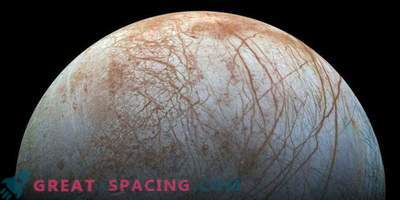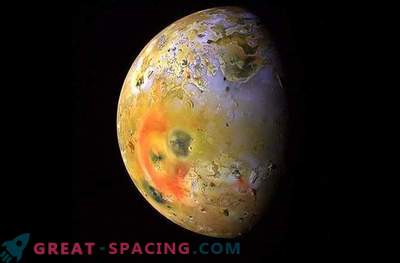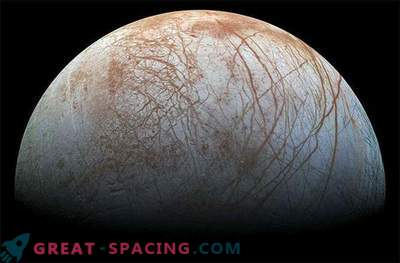
Hubble was searching for another proof of the presence of plumes, removing the surface of the moon.
On Monday, NASA will provide additional evidence of the presence of the subterranean ocean on Jupiter’s satellite in Europe, which has become the first candidate to search for life outside the Earth.
Scientists began to guess that there was an ocean on Europe, having obtained data from NASA's Voyager twin probes that had flown by Jupiter in 1979.
The photographs taken by the devices showed that the surface of Europe was relatively smooth, brighter than the earth's moon and dotted with stripes and mountain ranges.
“Some dark stripes had opposite sides. And they matched each other very precisely, like parts of a single puzzle. These cracks were divided and dark icy material seemed to flow between them. This suggested that the surface had been active for some time in the past, ”NASA said in 2014.
Some of the longest linear objects did not match the predicted fracture patterns (they should have been created according to the tide scheme when Europe was orbiting Jupiter). Instead, the model corresponded to the situation if the surface of Europe could move separately, independently of each other, without being constrained by internal forces. For example, this could happen if a layer of liquid or a substance warmer than ice was between the crust and internal forces, NASA said.
Close studies on this topic showed that Europe at some point in the past had a warm internal environment, and it can still keep warm. And this is a very important conclusion, which gives the prospect of the existence of a subsurface ocean. The next mission to Jupiter was the NASA Galileo spacecraft, which flew to a giant planet and accompanying moons from 1995 to 2003. As part of a large study, Galileo flew 12 times close to Europe, the second closest major satellite of Jupiter after Io.
“One of the most important measurements of Galileo showed that Jupiter’s magnetic field was disturbed in space around Europe. These data clearly show that a special type of magnetic field is created (or induced) within Europe by a deep layer of some electrically conductive liquid located below the surface. Based on the ice composition of Europe, scientists believe that the most likely material for creating this magnetic phenomenon is the global ocean of salt water, ”NASA said.
Then in 2012, images taken from the Hubble Space Telescope recorded a cloud of water vapor rising above the southern field of Europe. This gave another reason to prove the presence of water plumes erupting from under the surface of the moon.
“If these plumes are connected with the groundwater of the ocean, which we are sure to exist under the European crust, this means that future research can directly examine the chemical composition of Europe’s potentially habitable environment without drilling through ice. And this is extremely interesting, ”said in a statement leading scientist Lorenz Roth, who at that time collaborated with the South-West Research Institute in San Antonio.
Then the trains were noticed only once - in December 2012. But it gave scientists extra time to use Hubble for searches.
Astronomers also reviewed the archival images of Galileo and found that the surface of Europe has clay-like minerals that may contain organic matter. Another analysis shows that there are active tectonic plates in Europe. And this is a process that can sow water with nutrients. Another inspection of the archival images of Galileo found that the rough ice patches on Europe were probably caused by huge water lakes that were trapped relatively close to the surface. The researchers suggested that the lakes, formed from surface ice, interact with the deep salty and warm ocean, located on the top of the rocky mantle.
The key evidence was the circular area - Tera Macula, which is 62 miles wide (Lake Ontario).
“The surface went down about 300-600 meters throughout this area. Large icebergs resembled cracks, and they floated above the lowest point. This tells us that the material below this line on the surface is still in a liquid state. It turns out that there is a giant lake, ”said leading scientist Britney Schmidt in March 2012.
In her opinion, the lake should be 2-2.5 miles deep.
Schmidt, who currently holds the position of professor at the Georgia Institute of Technology in Atlanta, along with William Sparks, who heads the Hubble team to search for trains in Europe, gather with other scientists to discuss the new data at a NASA press conference on Monday.











































